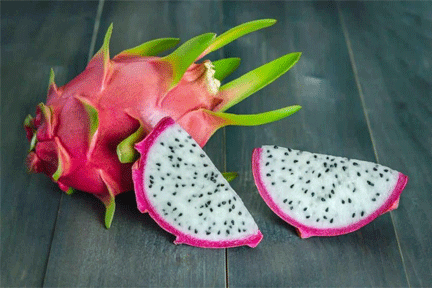Dragon fruit and pitaya: pretty outside, delicious inside
News Category: News and Food and Drink
-
Published May 28, 2023
Even after so many years, I still love going to the mercado and wandering the aisles looking at everything and everyone. There are a handful of vendors I shop with regularly, and they smile and wave when they see me or hold up something new or different they think I might be interested in.
Such was the case with dragon fruit. Of the several varieties available, the torpedo-shaped type with bright red and neon green “scales” are the most exotic looking. The scaled skin can also be luminous yellow-gold or matte red, and each kind will taste slightly different. In some parts of Mexico, pitaya, another variety, is more common, and although it tastes similar, it is rounder in shape, comes in a rainbow of colors inside and out and is covered with spiky spines that are usually removed before they go to market.
Turns out they are deliciously edible, and you owe it to yourself to try ‘em. This unusual tropical fruit is native to Asia, Central America, Hawaii and Mexico, and grows on the Hylocereus cactus, hanging from the plant’s long spiky fronds like prehistoric Christmas ornaments. The plant, also known as the “Honolulu Queen,” only blooms at night, and once the flowers die, the fruits form. A mature plant can bear fruit four to six times a year, so they may come and go and then suddenly appear again in your local market. Pitayas, though, have a much shorter season and produce for only 6–8 weeks, so buy ‘em when you see ‘em!


Leave a Reply